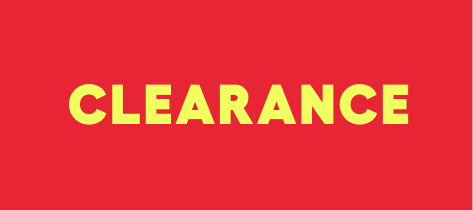Install beadboard wainscoting boards or panels
-
Difficulty:
 Close DifficultyBeginner Do-It-Yourselfer - EasyIntermediate Do-It-Yourselfer - ModerateExperienced Do-It-Yourselfer - DifficultProfessional - Expert
Close DifficultyBeginner Do-It-Yourselfer - EasyIntermediate Do-It-Yourselfer - ModerateExperienced Do-It-Yourselfer - DifficultProfessional - Expert - Completion Time : 1 jour
Available in strips or panels, made of wood, MDF or PVC, beadboard panelling or wainscoting instantly adds charm and warmth to walls. Simple steps for installing this type of wall treatment.
Tools and materials required
TOOLS
- Screwdriver
- Hammer
- Mallet
- Measuring tape
- Ruler
- Pencil
- Level
- Stud finder
- Mitre saw
- Jigsaw
- Pneumatic nailer
- Notched trowel
MATERIALS
- Wainscot boards or beadboard panels
- Finishing nails
- Screws and plugs
- Construction adhesive
- Pre-notched baseboard moulding
- * There are special baseboard and chair rail mouldings designed for use with beadboard wainscoting. They have been rabbeted at the back to create a space for the ends of the wainscot boards or panels.
- Outlet box extenders
NOTES
CHOOSING BEADBOARD
Beadboard wainscoting comes in a variety of materials and formats:
- MDF beadboard panels: Easy and quick to install. Can be left with white primer or painted the colour of your choice. Various sizes available, imitating beadboard of different widths.
- PVC beadboard planks: Lightweight, mould-resistant, quick and easy to install. Perfect for bathrooms and other high-moisture areas.
- Wood beadboard strips: Species include pine, oak and teak. Can be painted, or stained to bring out the wood’s natural beauty. Variety of widths.
DETERMINE LAYOUT DIRECTION
- Vertical: Makes the room seem higher and narrower
- Horizontal: Makes the room seem wider and lower
- Diagonal: Adds interest and a touch of modernity
DETERMINE INSTALLATION PATTERN
Beadboard can be installed in two ways: with randomly staggered joints or in a regular brick-joint pattern.
- Random joints: The strips are laid end to end without being cut to any specific length, which creates randomly staggered joints. This is the simplest, most common and most economical method.
- Random joints: The strips are laid end to end without being cut to any specific length, which creates randomly staggered joints. This is the simplest, most common and most economical method.
SUBSTRATES
The substrate is the surface to which the beadboard is attached.
- Directly to the wall framing: This method, which is not very commonly used and is more complex than other installation techniques, involves building a support framework from blocking and furring to which the beadboard or wainscot panels are fastened. This technique allows the wall to "breathe" and is used especially if the wainscoting is very thin or if the wall surface is uneven.
- Over drywall: The boards can be screwed or nailed to furring strips, or, depending on their thickness, they can be glued and nailed to the wall directly.
- Over concrete (using furring strips)
FASTENING METHODS
Gluing:
- Very easy to do.
- Substrate must be clean, smooth and dry.
- Use neoprene-based adhesive suitable for the substrate.
- To remove, the beadboard must be pulled away, which can damage the wall. Glue is sometimes used in conjunction with other fastening methods, for greater solidity.
Nailing:
- Use headless finishing nails.
- Nail through the side of the board or panel.
Stapling:
- Staple through the tongue or groove of the board.
- Set the stapler to a power that will not split the board.
Clipping:
- The clip fits onto the board first before being nailed to the framework or substrate.
Before you begin, remove the beadboard from its packaging and leave it in the room for 24 and 48 hours to allow it to adjust to the temperature and humidity levels.
Before Assembly
Steps
1.1. Decide how you are going to install the wainscot boards or panels – in which direction and type of pattern – and how they will be fastened. In this project we use individual beadboard strips, or wainscot boards, that are fastened directly over drywall with glue and nails. The boards will be installed vertically on the lower part of the wall, with a chair rail along the top.
1.2. Measure the height and width of the wall to be covered, in order to calculate the surface area.
1.3. Calculate the quantity of boards or panels you will need.
1.4. Also purchase the baseboard, quarter-round and other moulding and trim you may require.
2.1. Switch off the electrical supply.
2.2. Remove the outlet covers and switch plates. If necessary, replace the existing electrical boxes with deeper ones, or add box extenders, to compensate for the thickness of the wainscoting.
2.3. Remove all trim from the walls.
2.4. Remove, and replace as necessary, any door or window frames that need to be thicker than the beadboard.
2.5. Remove the existing baseboard and replace it with pre-notched baseboard that has a rabbeted groove at the back to hold the beadboard. It is also possible to reuse the existing baseboard by placing it over the wainscoting once installed.
2.6. Check that the wall is perfectly dry with no signs of damp.
2.7. Install a vapour barrier if necessary.
2.8. Protect the floor with paper or a plastic sheet.
3.1.
Using a stud finder, locate and mark the position of the wall studs.
3.2. Determine the desired height for the wainscoting – the height at which the chair rail will sit.
3.3. Cut one wainscot board to the desired length with the mitre saw.
3.4. Put the board against the wall and place a 4-ft spirit level (or longer) on top. When level, mark the position of the top edge of the board at several points along the wall.
3.5. Use a chalk line to extend the layout line around the room.
The best way is to cut the boards as you go along and to regularly measure the length you need.
4.1.
Start at the most visible corner of the room, which is usually an inside corner. However, if the room has an outside corner, start there.
Outside corner: cut the grooved edge of two boards at a 45o bevel. The tongues must be facing outwards to continue assembling the boards on either side.
Inside corner: butt the grooved edge into the corner so that the tongues face outwards along the wall, to continue assembling the boards and to allow for nailing.
4.2. Apply construction adhesive to the back of the board. Run the glue in a wavy line along the full length of the board. Do not use too much. Spread the glue with a notched trowel. Alternatively, you can apply the adhesive directly to the support framework or substrate.
4.3. Insert the beadboard into the baseboard and press it firmly against the wall. Make sure it is perfectly plumb, as it will serve as a guide for the following boards. If necessary, use a mallet to drive the beadboard properly into the baseboard.
4.4. Using a pneumatic nailer and 1 ¼" nails, drive the nails through the tongue of the board and into the wall at a 45o angle.
4.5.
Progressively glue and insert the tongue-and-groove boards into one another. Check for level regularly and adjust the boards as necessary.
4.6.Use at least three nails per board. Adjust the number of nails according to the length of the board.
5.1.
Measure the locations of electrical outlets and light switches.
5.2. Transfer these measurements to your board or panel.
5.3. Using a jigsaw, cut along the marks, starting with the top and bottom edges of the notch.
5.4. Pull out the receptacle from the electrical box and install a box extender. CAUTION: Double-check that the electrical circuit to the room is switched off.
5.5. Replace the receptacle and fasten the box with long extension screws.
5.6. Make holes or notches in the beadboard to insert the screws.
6.1.
Measure the distance, at various points, between the corner and the last-but-one board (measure to the edge of the bead – do not include the tongue).
6.2. Subtract 1/8" from these measurements to allow for expansion of the last board.
6.3. On a table saw, cut the last board to the required width and bevel the edge at a 30o angle.
6.4. Cut out the back half of the groove so as to be able to insert the board in the space.
6.5. Check the fit and adjust as needed.
6.6. Once the board is perfectly adjusted, apply adhesive and press it into place against the wall.
6.7. Nail firmly to the wall and studs.
7.1. If you did not use pre-notched baseboard, install the baseboard and/or quarter-round.
7.2. Install chair rail along the top of the wainscoting. Alternatively you could install a shelf.
7.3. Screw on the outlet covers and switch plates.
RONA Leamington
274 Talbot St. West,
Leamington,
Ontario, N8H 4H3
Phone : (519) 322-4908
Monday - Sunday: 8:30 AM - 7:00 PM (Eastern Time)

All prices listed in Canadian dollars




















